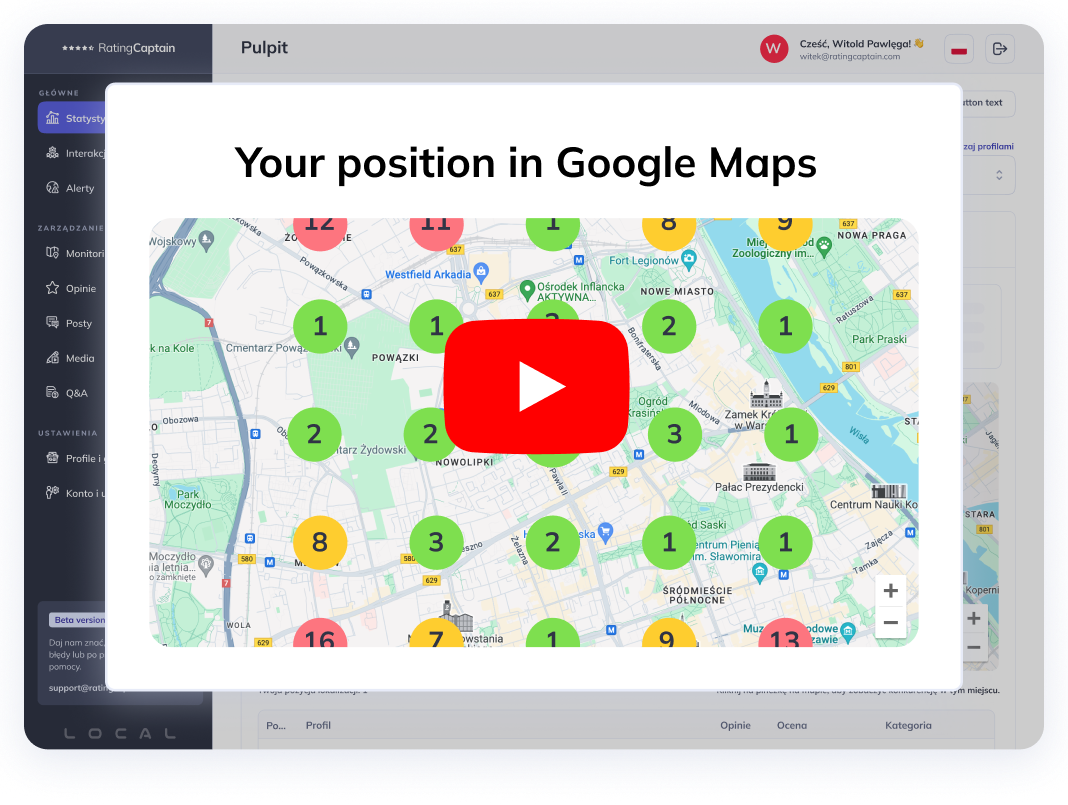

The Easiest Way to Collect
Customer Reviews on Google
SWOT analysis - what is it and how to apply it in a company?

Table of contents
SWOT Analysis - What is it and how to apply it in a company?
To achieve success and stay competitive in the market, it is essential to have a thorough understanding of your situation and develop an effective strategy. One of the tools that can help with this is the SWOT analysis. In this article, we will take a closer look at what SWOT analysis is and how it can be applied in the context of a company.
What is a SWOT analysis for a company? How to conduct a SWOT analysis?
SWOT analysis is a strategic tool that helps companies understand their internal and external situation. The acronym SWOT stands for the four main elements analyzed in this process, including:
-
Strengths: These are internal factors that represent the strong points of a company. They can include qualified staff, a recognizable brand, unique products, or an excellent reputation.
-
Weaknesses: These are areas where a company may have shortcomings, also considered internal factors. They can include a lack of financial resources, inefficient processes, or weak management.
-
Opportunities: These are external factors that can bring many benefits to a company. They can include new market trends, changes in legal regulations, or a lack of competition in a specific market segment.
-
Threats: These are external factors that describe potential risks that can have a negative impact on a company. They can include competition, a decrease in demand for products, or changes in technology.
How to conduct a SWOT analysis for a company?
To conduct a SWOT analysis in a company, you need to go through several key steps:
Gather analytical data and information
The first step is to gather all the necessary data and information about the company. Then, analyze financial documents, the company's history, and monitor current market trends.
Identify strengths and weaknesses
Based on the collected data, you can identify both the strengths and weaknesses of the company. It is important to note that these factors are internal, so the company has control over shaping them.
Recognize opportunities and threats
Next, focus on identifying opportunities and threats that come from the external environment. These can be new market opportunities or competitive challenges.
Create a strategic analysis
After a thorough analysis, you can proceed to create a strategy. The goal is to leverage strengths to take advantage of opportunities and eliminate or minimize the impact of weaknesses and threats.
Company action strategies based on SWOT analysis
There are various strategies that can be adopted based on the results of the SWOT analysis. Here are a few examples:
Competitive strategy
If a company has many strengths and sees opportunities in the market, it can adopt a competitive strategy. This involves aggressive actions to gain an advantage over the competition.
Conservative strategy
If a company is aware of its weaknesses and fears threats, it can choose a conservative strategy. This focuses on stability and minimizing risks.
Aggressive strategy
If a company has strong strengths and sees many opportunities, it can adopt an aggressive strategy. This means maximizing the use of all available opportunities.
Defensive strategy
If a company has many weaknesses and needs to face threats, a defensive strategy may be the appropriate choice. This involves defending the company's existing market position.
TOWS Analysis - Discover the strengths and weaknesses of your company
The TOWS analysis is a modified version of the SWOT analysis, where the conclusions from the analysis of the four main areas (strengths, weaknesses, opportunities, threats) are transformed into specific strategies and actions for the company. The acronym TOWS stands for the following terms:
-
Threats into Opportunities: This process involves identifying ways to use opportunities to counter threats. This allows the company to transform potential sources of risk into new development opportunities.
-
Opportunities into Threats: This aspect of the TOWS analysis focuses on identifying the threats that may arise from attempting to take advantage of opportunities. It is important to avoid the risks that may accompany actions taken to exploit opportunities.
-
Weaknesses into Strengths: Here, the focus is on how to use the company's strengths to eliminate or minimize weaknesses. This is particularly important to strengthen the company's market position.
-
Strengths into Weaknesses: This analysis helps identify how existing strengths of the company can become weaknesses in the context of a changing market environment. This is important to avoid the pitfalls that may arise from excessive reliance on strengths.
Summary
The SWOT analysis is a powerful tool that can help companies better understand their situation and develop an effective strategy. By accurately identifying strengths, weaknesses, opportunities, and threats, a company can make more informed business decisions. It is important to remember that SWOT analysis is an ongoing process that should be regularly updated to remain aligned with the dynamic market environment.
Rating Captain
If you need an application to collect and manage reviews, the Rating Captain app can help. It is an efficient tool that supports businesses in acquiring and managing reviews. With the Rating Captain app, sending even hundreds of invitations will take less than 10 minutes.
With this application, customers will be able to easily and conveniently share their feedback on the quality of your services when purchasing a product or service. This will increase your company's online awareness among customers.
Please rate this article
Try our new
Local SEO tool
Manage and track visibility of your
Google Business Profiles




